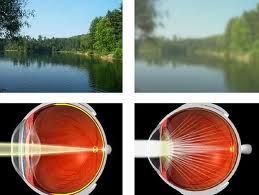Cataract is the world’s leading cause of blindness, with around 18 million people blind as a result. When you are diagnosed with cataract, doctor will show you a clouding of the eye’s natural lens which lies behind the iris and the pupil.
There are three main types of cataract:
- A subcapsular cataract occurs at the back of the lens. People with diabetes, high farsightedness or retinitis pigmentosa, or those taking high doses of steroid medications have a greater risk of developing a subcapsular cataract.
- A nuclear cataract forms deep in the central zone (nucleus) of the lens. Nuclear cataracts usually are associated with aging.
- A cortical cataract is characterized by white, wedge-like opacities that start in the periphery of the lens and work their way to the center in a spoke-like fashion. This type of cataract occurs in the lens cortex, which is the part of the lens that surrounds the central nucleus.
Cataract Symptoms
The most common symptoms of cataract are:
- Difficulty seeing in glaring conditions, especially when driving at night
- Reduced vision in bright lights
- Decreased close-up vision capabilities (farsightedness)
- The appearance of halos around lights, especially at night
- Rapidly progressing vision changes
Color shift is produced by a lens that is more absorbent at the blue end of the spectrum, causing color perception to fade. Color shift is common with nuclear cataracts. Usually patients are not aware of a defect in color perception, although it becomes apparent after cataract surgery when they readjust to normal color perception.
Treatments
Cataract often develops by aging as some protein made of lens clump together and start to cloud a small area behind the iris and the pupil. However, as seeing you vision becomes hazy, you should ask your eye doctor to check and apply right treatments.
At the early stage of cataract, when you notice some of signs of cataract, you may be able to improve your vision for a while using new glasses, strong bifocals, magnification, appropriate lighting or other visual aids.
If the symptoms becomes more serious, the you should see a doctor and may be recommended a cataract surgery to restore your vision as soon as possible.
During surgery, the surgeon will remove your clouded lens and in most cases replace it with a clear, plastic intraocular lens (IOL).
Any one is able to at risk of cataract, however, see the list below and let improve your habit if you are involved. the list groups those who are at high risk of cataract:
- Certain diseases such as diabetes.
- Personal behavior such as smoking and alcohol use.
- The environment such as prolonged exposure to sunlight.
Cataract is not very serious and lead to blindness if you do action now to protect your eyes – your vision.

